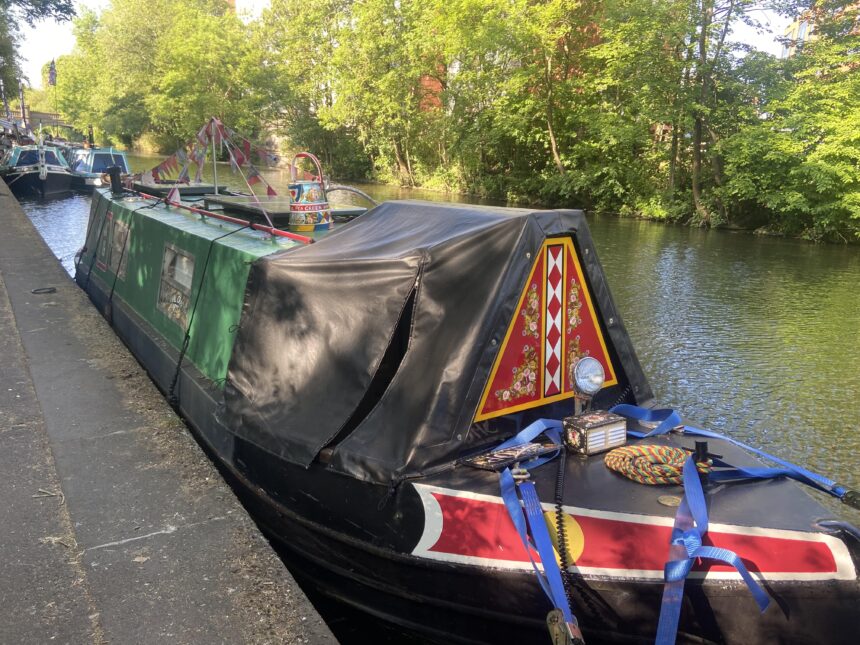by Karin Li
Living in Leicester, I stroll along the river trail (towpath) a lot. If you take a walk or cycle along the rivers around Leicestershire, the Midlands or around England, these long “floating homes” alongside swans and ducks are a familiar scene. When there is traffic on the canal, it’s always lovely to wave and say hello to the boat operators or those who are just enjoying the tranquil view from the standing space. Looking at the canalside trees, the moments give me a change of scenery and bring me closer to nature. However, in the old times these “towpaths” had other users – horses and boatmen.
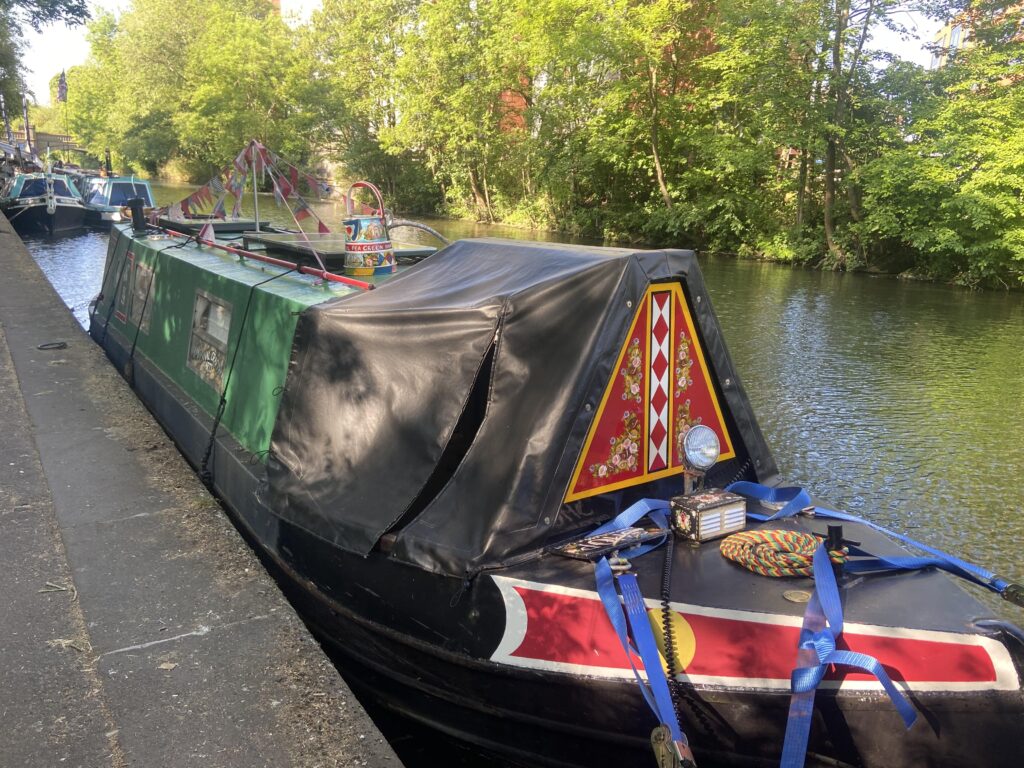
Importance of narrowboats in the British Industrial past
The narrowboats had their glory days during the Industrial Revolution of the 18th and 19th century. Let us first travel back in time to when we relied on horses and carts to move goods. Still engineless wooden narrowboats were pulled by horses using rope along the narrow towpaths, serving as vital transport for raw materials like coal from mines and large volumes of goods from factories to ports. The. roads were not well developed, often muddy and bumpy. Water transport became a cheap and safe alternative, especially for the transportation of renowned pottery from Stoke-on-Trent. That explains why pottery manufacturer Josiah Wedgwood was a major promoter of the Trent and Mersey Canal and built a new factory in Etruria next to the Canalside. Coal mine owners and textile merchants. contributed to the building of canals to have a better transport infrastructure for their trade. During the “canal mania” period, there were significant investments. Though the boats moved at a considerably slow pace by today’s standards, they played a crucial role before trains, lorries and airplanes took over.
Ever wondered about the size and width of the narrowboat? Narrowboats were designed to navigate narrow canals in the country. Their design was built to fit. the canal locks. For a boat to fit a narrow lock, Thad to be under 7 feet wide. James Brinkley (1716-1772) was one of the early canal engineers and created some industry standards. Size matters! Modern ships have specific sizes too – the Panamax ships is the largest vessel that transits the Panama Canal!
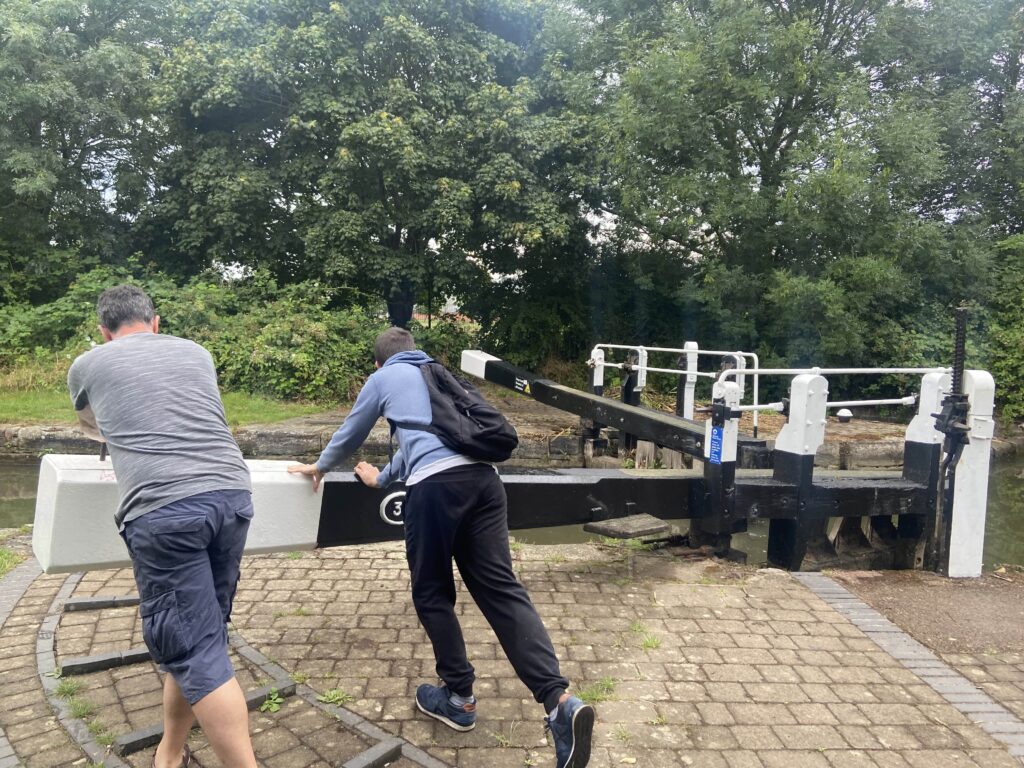
To navigate the narrowboat through the canals, one person stays on board and steers with the tiller; while the other person takes care of the canal locks, winding the lock paddle to control the flow of water, and pushing the balance beam to open and close the heavy gate. When the lock paddle is set to the other side, you can conveniently cross to the other side by walking on the balance beam. It took a while for me to understand what was going on!
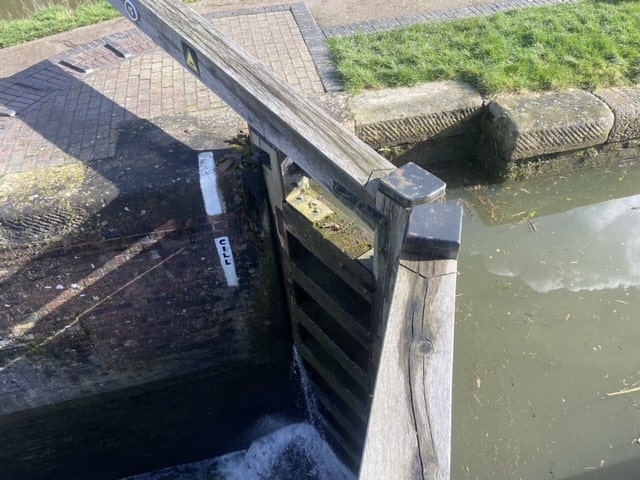
If we are going to move goods by boat, what happens if the river waters are violent? Or if we want to move from a canal on top of a hill to another at the bottom. That’s where locks come to play. Locks help raise and lower boats between different water levels. When you move into a lock and fill it with water, your boat will be lifted to be the higher level. When you drive into a full lock and empty it, your boat will be dropped to the lower level.
The Leicester Line of the Grand Union Canal, spanning 41.2 miles, has 41 locks. The process of going through one lock can take a long time. It might take 15 minutes to get through it and there might be a queue of boats in the high season, especially since it is quite busy on the water during the summer months.
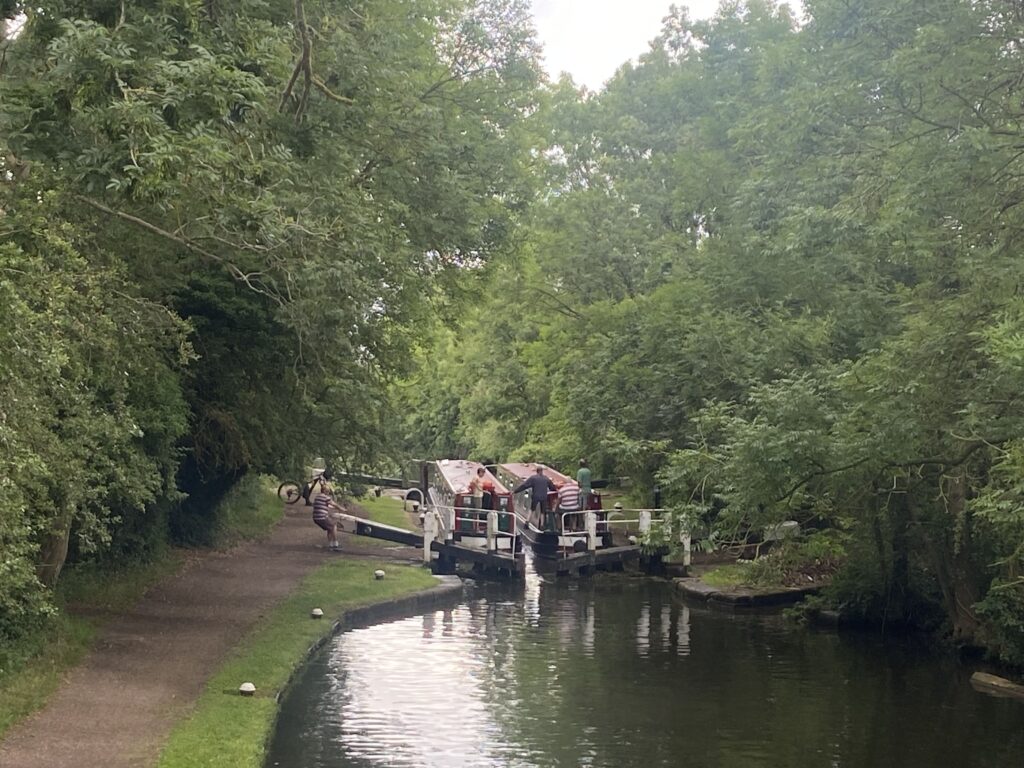
Besides, there are bridges and tunnels to go through along the Grand Union Canal. It’s. intriguing to find out that before boats were powered by engines, some early canal tunnels were built without a towpath which means the tunnel is just wide enough for the narrowboat to go through. As horses don’t fit, “legging” is needed – two people would lie down on top of the boating manually move it with their feet against the tunnel wall incomplete darkness.
Foxton Locks – overcoming steep slopes
It was a sunny winter day when I visited Foxton Locks near Market Harborough in Leicestershire, and it’s very interesting to watch boats going up and down, lock after lock. Built in 1810 and opened in 1814, Foxton Locks is along the Grand Union Canal part of the Midlands to London route. There is a sign pointing to London (106 miles) and one would probably need 5 days to get there.
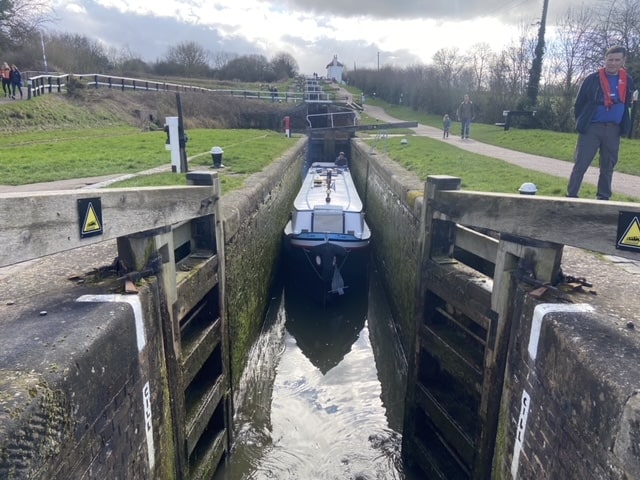
This staircase of locks was Benjamin Bevan’s idea, and it alters the water levelly 75 feet (almost 23 metres)! Standing at the top and looking down I can see how steep this is. With the introduction of locks, the rapid flow of water becomes a controlled and navigable pathway. It led me to think about our relationship with nature and how the landscape is reshaped. Often, we see nature as something we can control.
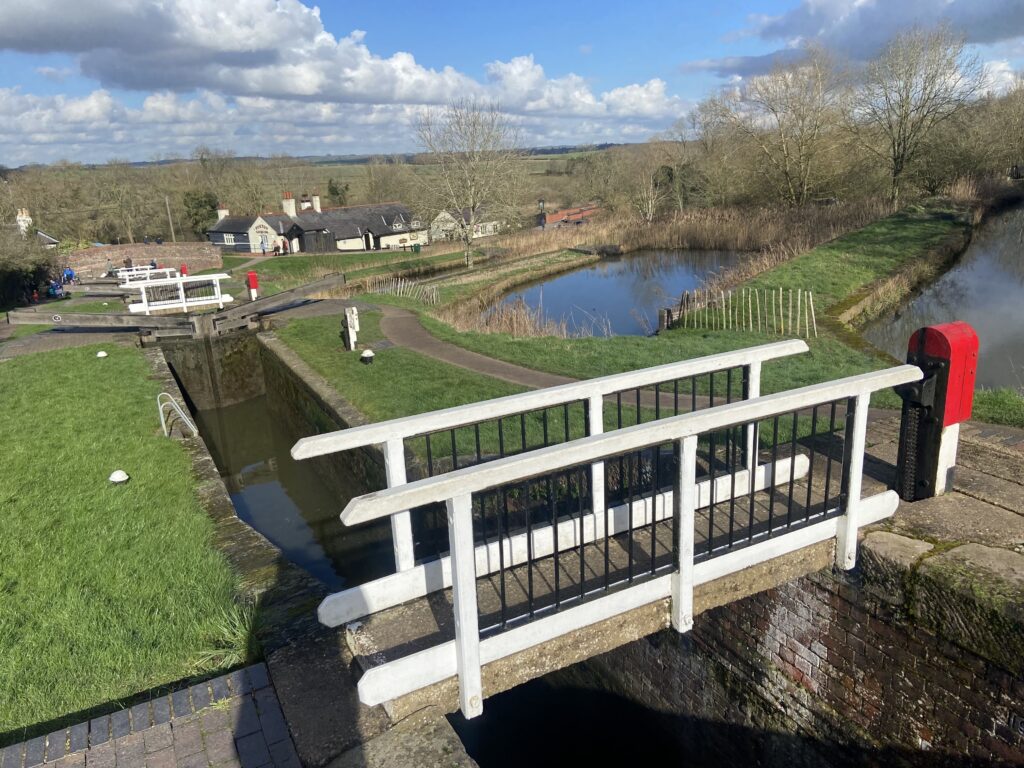
Walking up and down the locks I noticed some “water ponds” – they seem “natural”. Foxton Locks has a distinctive structure known as side ponds to manage the water level. Water is transferred between the lock chambers and the side pounds to facilitate the elevation changes. Saving water is important as it can only flown downhill, not up, and every time a lock is utilised, large amounts of water are moved down the canal. These sides ponds help conserve water and make the lock operation more efficient. Rain plays a part in keeping the water topped up, but a drought forced Foxton Locks to close in 1936, so it was necessary to pump water to the top.
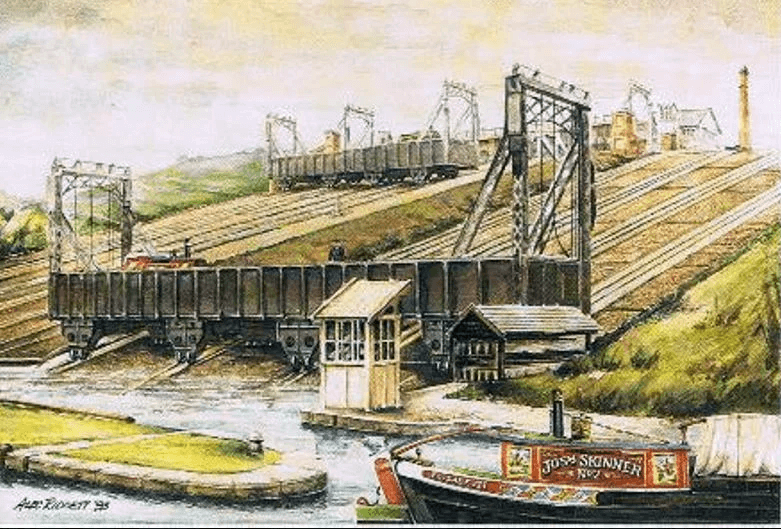
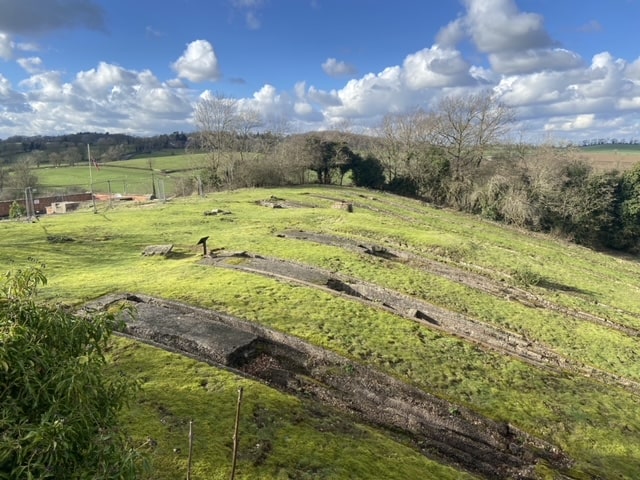
Any guess how long it takes to pass through ten locks? It takes about 45 minutes so it is not a surprise to learn that the locks created a bottleneck when the canal traffic was in its heyday. The solution to meet the demand was to lift the boats by cable railway. The caissons/tanks were raised incline helped save water and accommodate larger boats.
The construction of the inclined route was an attempt by the canal company to compete with the railway. unfortunately, it only replaced the locks for a decade as in 1911 it was considered uneconomical. The original boiler house that powered the boat lift became the Foxton Canal Museum.
At the top lock is the Foxton Lock Cottage where tourists can buy book and a drink today. A house alongside the canal meant the lock keepers could see when boats were coming and go out to help. They had hard and long days especially in the boating season. Their presence helped prevent accidents and ensured a smooth passage through the lock.
Decline and revival of narrowboats
In the 1830s canals started to suffer competition from the railway system. As work became less well paid and less frequent, boatmen’s wives and children moved onto boats, sleeping in a tiny space. By the 1850s the railway system had become the primary commercial transport system in the UK. Soon the amount of cargo carried on the canals had fallen by nearly two-thirds.IT was the First World War which marked the end for the transportation of goods by canal.
Years later, many boats were abandoned, and canals became derelict. An interest in reviving the waterways emerged with Tom Root’s book Narrow Boat published in 1944 detailing his travels along the canals in the Midlands. Restoration projects gained momentum in the 1960s and 70s. Nowadays, narrowboats are adapted for leisure andas home which. are seen as an affordable option. Navigation at a maximum speed of 4 miles per hour and mooring whenever they wish to stop – these narrowboats allow people to experience the neglected and revived waterways. There are more than 8,000 narrowboats registered as long-term residences across the country. Can you imagine yourself adapting to the quiet and simple boat life – waking up in the morning and looking through the quaint portholes? These boats hace all the amenities for living. They fit in the bed, TV, the sink/cook, the fridge, and the toilet in one compact space.
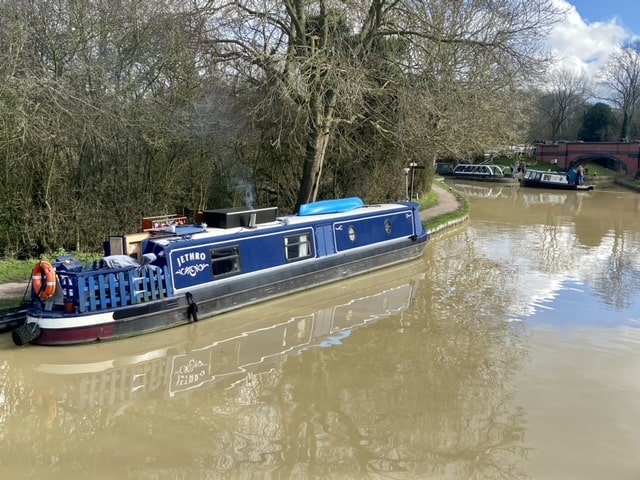
What struck me is how well connected the water roads can be. Boats can navigate south to London and to the north to Sheffield and further to North Yorkshire. According to the Inland Waterways Association that campaigns for the use, maintenance, and restoration of Britain’s inland waterways, there were once 7,000 miles of canals and navigable rivers in mainland Britain. Presently 5,000 are navigable, with 2,700 miles forming the connected waterways system of England and Wales.
Despite the charm of these waterways, challenges persist. Traffic can be brought to a halt if there are lock issues. After flooding it is often required to clear silt and other debris before the gates can be reopened, so they may remain closed after river levels have returned to normal. Locks and narrowboats need regular maintenance to keep them in good condition.
When people talk about industrial heritage, they more often talk about abandoned warehouses and factories, as well as the iconic chimneys. We underestimate how. narrowboats also form part of industrial history, created a lasting impact, and need preservation.
If you wish to contact the author of this article, please send an email to community@europeanheritagetimes.eu
